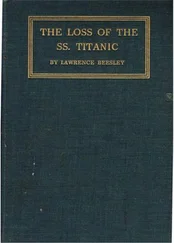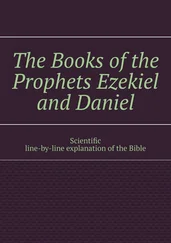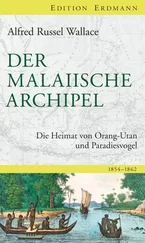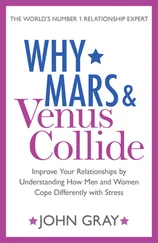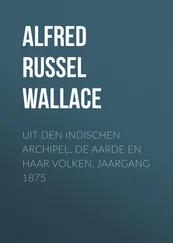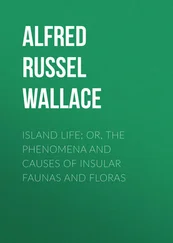Alfred Wallace - Is Mars habitable? A critical examination of Professor Percival Lowell's book Mars and its canals, with an alternative explanation
Здесь есть возможность читать онлайн «Alfred Wallace - Is Mars habitable? A critical examination of Professor Percival Lowell's book Mars and its canals, with an alternative explanation» — ознакомительный отрывок электронной книги совершенно бесплатно, а после прочтения отрывка купить полную версию. В некоторых случаях можно слушать аудио, скачать через торрент в формате fb2 и присутствует краткое содержание. Издательство: Иностранный паблик, Жанр: foreign_edu, Физика, на английском языке. Описание произведения, (предисловие) а так же отзывы посетителей доступны на портале библиотеки ЛибКат.
- Название:Is Mars habitable? A critical examination of Professor Percival Lowell's book Mars and its canals, with an alternative explanation
- Автор:
- Издательство:Иностранный паблик
- Жанр:
- Год:неизвестен
- ISBN:нет данных
- Рейтинг книги:5 / 5. Голосов: 1
-
Избранное:Добавить в избранное
- Отзывы:
-
Ваша оценка:
- 100
- 1
- 2
- 3
- 4
- 5
Is Mars habitable? A critical examination of Professor Percival Lowell's book Mars and its canals, with an alternative explanation: краткое содержание, описание и аннотация
Предлагаем к чтению аннотацию, описание, краткое содержание или предисловие (зависит от того, что написал сам автор книги «Is Mars habitable? A critical examination of Professor Percival Lowell's book Mars and its canals, with an alternative explanation»). Если вы не нашли необходимую информацию о книге — напишите в комментариях, мы постараемся отыскать её.
Is Mars habitable? A critical examination of Professor Percival Lowell's book Mars and its canals, with an alternative explanation — читать онлайн ознакомительный отрывок
Ниже представлен текст книги, разбитый по страницам. Система сохранения места последней прочитанной страницы, позволяет с удобством читать онлайн бесплатно книгу «Is Mars habitable? A critical examination of Professor Percival Lowell's book Mars and its canals, with an alternative explanation», без необходимости каждый раз заново искать на чём Вы остановились. Поставьте закладку, и сможете в любой момент перейти на страницу, на которой закончили чтение.
Интервал:
Закладка:
Alfred Russel Wallace
Is Mars habitable? A critical examination of Professor Percival Lowell's book «Mars and its canals,» with an alternative explanation
PREFACE
This small volume was commenced as a review article on Professor Percival Lowell's book, Mars and its Canals , with the object of showing that the large amount of new and interesting facts contained in this work did not invalidate the conclusion I had reached in 1902, and stated in my book on Man's Place in the Universe , that Mars was not habitable.
But the more complete presentation of the opposite view in the volume now under discussion required a more detailed examination of the various physical problems involved, and as the subject is one of great, popular, as well as scientific interest, I determined to undertake the task.
This was rendered the more necessary by the fact that in July last Professor Lowell published in the Philosophical Magazine an elaborate mathematical article claiming to demonstrate that, notwithstanding its much greater distance from the sun and its excessively thin atmosphere, Mars possessed a climate on the average equal to that of the south of England, and in its polar and sub-polar regions even less severe than that of the earth. Such a contention of course required to be dealt with, and led me to collect information bearing upon temperature in all its aspects, and so enlarging my criticism that I saw it would be necessary to issue it in book form.
Two of my mathematical friends have pointed out the chief omission which vitiates Professor Lowell's mathematical conclusions—that of a failure to recognise the very large conservative and cumulative effect of a dense atmosphere. This very point however I had already myself discussed in Chapter VI., and by means of some remarkable researches on the heat of the moon and an investigation of the causes of its very low temperature, I have, I think, demonstrated the incorrectness of Mr. Lowell's results. In my last chapter, in which I briefly summarise the whole argument, I have further strengthened the case for very severe cold in Mars, by adducing the rapid lowering of temperature universally caused by diminution of atmospheric pressure, as manifested in the well-known phenomenon of temperate climates at moderate heights even close to the equator, cold climates at greater heights even on extensive plateaux, culminating in arctic climates and perpetual snow at heights where the air is still far denser than it is on the surface of Mars. This argument itself is, in my opinion, conclusive; but it is enforced by two others equally complete, neither of which is adequately met by Mr. Lowell.
The careful examination which I have been led to give to the whole of the phenomena which Mars presents, and especially to the discoveries of Mr. Lowell, has led me to what I hope will be considered a satisfactory physical explanation of them. This explanation, which occupies the whole of my seventh chapter, is founded upon a special mode of origin for Mars, derived from the Meteoritic Hypothesis, now very widely adopted by astronomers and physicists. Then, by a comparison with certain well-known and widely spread geological phenomena, I show how the great features of Mars—the 'canals' and 'oases'—may have been caused. This chapter will perhaps be the most interesting to the general reader, as furnishing a quite natural explanation of features of the planet which have been termed 'non-natural' by Mr. Lowell.
Incidentally, also, I have been led to an explanation of the highly volcanic nature of the moon's surface. This seems to me absolutely to require some such origin as Sir George Darwin has given it, and thus furnishes corroborative proof of the accuracy of the hypothesis that our moon has had an unique origin among the known satellites, in having been thrown off from the earth itself.
I am indebted to Professor J. H. Poynting, of the University of Birmingham, for valuable suggestions on some of the more difficult points of mathematical physics here discussed, and also for the critical note (at the end of Chapter V.) on Professor Lowell's estimate of the temperature of Mars.
BROADSTONE, DORSET, October 1907.
CHAPTER I.
EARLY OBSERVERS OF MARS
Few persons except astronomers fully realise that of all the planets of the Solar system the only one whose solid surface has been seen with certainty is Mars; and, very fortunately, that is also the only one which is sufficiently near to us for the physical features of the surface to be determined with any accuracy, even if we could see it in the other planets. Of Venus we probably see only the upper surface of its cloudy atmosphere. 1 1 Mercury also seems to have a scanty atmosphere, but as its mass is only one-thirtieth that of the earth it can retain only the heavier gases, and its atmosphere may be dust-laden, as is that of Mars, according to Mr. Lowell. Its dusky markings, as seen by Schiaparelli, seem to be permanent, and they are also for considerable periods unchangeable in position, indicating that the planet keeps the same face towards the sun as does Venus. This was confirmed by Mr. Lowell in 1896. Its distance from us and unfavourable position for observation must prevent us from obtaining any detailed knowledge of its actual surface, though its low reflective power indicates that the surface may be really visible.
As regards Jupiter and Saturn this is still more certain, since their low density will only permit of a comparatively small proportion of their huge bulk being solid. Their belts are but the cloud-strata of their upper atmosphere, perhaps thousands of miles above their solid surfaces, and a somewhat similar condition seems to prevail in the far more remote planets Uranus and Neptune. It has thus happened, that, although as telescopic objects of interest and beauty, the marvellous rings of Saturn, the belts and ever-changing aspects of the satellites of Jupiter, and the moon-like phases of Venus, together with its extreme brilliancy, still remain unsurpassed, yet the greater amount of details of these features when examined with the powerful instruments of the nineteenth century have neither added much to our knowledge of the planets themselves or led to any sensational theories calculated to attract the popular imagination.
But in the case of Mars the progress of discovery has had a very different result. The most obvious peculiarity of this planet—its polar snow-caps—were seen about 250 years ago, but they were first proved to increase and decrease alternately, in the summer and winter of each hemisphere, by Sir William Herschell in the latter part of the eighteenth century. This fact gave the impulse to that idea of similarity in the conditions of Mars and the earth, which the recognition of many large dusky patches and streaks as water, and the more ruddy and brighter portions as land, further increased. Added to this, a day only about half an hour longer than our own, and a succession of seasons of the same character as ours but of nearly double the length owing to its much longer year, seemed to leave little wanting to render this planet a true earth on a smaller scale. It was therefore very natural to suppose that it must be inhabited, and that we should some day obtain evidence of the fact.
The Canals discovered by Schiaparelli.
Hence the great interest excited when Schiaparelli, at the Milan Observatory, during the very favourable opposition of 1877 and 1879, observed that the whole of the tropical and temperate regions from 60° N. to 60° S. Lat. were covered with a remarkable network of broader curved and narrower straight lines of a dark colour. At each successive favourable opposition, these strange objects called canali (channels) by their discoverer, but rather misleadingly 'canals' in England and America, were observed by means of all the great telescopes in the world, and their reality and general features became well established. In Schiaparelli's first map they were represented as being much broader and less sharply defined than he himself and other observers found by later and equally favourable observations that they really were.
Читать дальшеИнтервал:
Закладка:
Похожие книги на «Is Mars habitable? A critical examination of Professor Percival Lowell's book Mars and its canals, with an alternative explanation»
Представляем Вашему вниманию похожие книги на «Is Mars habitable? A critical examination of Professor Percival Lowell's book Mars and its canals, with an alternative explanation» списком для выбора. Мы отобрали схожую по названию и смыслу литературу в надежде предоставить читателям больше вариантов отыскать новые, интересные, ещё непрочитанные произведения.
Обсуждение, отзывы о книге «Is Mars habitable? A critical examination of Professor Percival Lowell's book Mars and its canals, with an alternative explanation» и просто собственные мнения читателей. Оставьте ваши комментарии, напишите, что Вы думаете о произведении, его смысле или главных героях. Укажите что конкретно понравилось, а что нет, и почему Вы так считаете.

